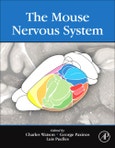The Mouse Nervous System provides a comprehensive account of the central nervous system of the mouse. The book is aimed at molecular biologists who need a book that introduces them to the anatomy of the mouse brain and spinal cord, but also takes them into the relevant details of development and organization of the area they have chosen to study. The Mouse Nervous System offers a wealth of new information for experienced anatomists who work on mice. The book serves as a valuable resource for researchers and graduate students in neuroscience.
Please Note: This is an On Demand product, delivery may take up to 11 working days after payment has been received.
Table of Contents
Section A Development Genetic regionalisation morphogenesis Gene targeting Genetic neuoanatomy
Section B Structure Neocortex Hippocampus Piriform cortex Subpallial structures Hypothalamus Diencephalon Midbrain Cerebellum Hindbrain Spinal cord Vascular supply Imaging techniques
Section C Motor and Sensory Systems Motor nuclei of the cranial nerves Visceral motoneurons Neurosecretory nuclei of the hypothalamus and preoptic area Cortical structures in motor control Hypothalamic goal directed behavior Subpallial structures Somatosensory Gustatory Pain Auditory Visual Olefactory Vestibular
Section D Behavioral States Basal nucleus of Meynert
Section E Emotional States Introduction to emotional states Orbitofrontal coretex
Section F Mouse Models of Mental Illness and Neurological Disease Overview of mouse models Huntington's Drug addictions
Authors
Charles Watson John Curtin Distinguished Professor of Health Science, Curtin University of Technology, Perth, Australia and Neuroscience Research Australia, NSW Sydney, Australia. Charles Watson is a neuroscientist and public health physician. His qualifications included a medical degree (MBBS) and two research doctorates (MD and DSc). He is Professor Emeritus at Curtin University, and holds adjunct professorial research positions at the University of New South Wales, the University of Queensland, and the University of Western Australia.He has published over 100 refereed journal articles and 40 book chapters, and has co-authored over 25 books on brain and spinal cord anatomy. The Paxinos Watson rat brain atlas has been cited over 80,000 times. His current research is focused on the comparative anatomy of the hippocampus and the claustrum.
He was awarded the degree of Doctor of Science by the University of Sydney in 2012 and received the Distinguished Achievement Award of the Australasian Society for Neuroscience in 2018. George Paxinos Neuroscience Research Australia and The University of New South Wales, Sydney, Australia. Professor George Paxinos, AO (BA, MA, PhD, DSc) completed his BA at The University of California at Berkeley, his PhD at McGill University, and spent a postdoctoral year at Yale University. He is the author of almost 50 books on the structure of the brain of humans and experimental animals, including The Rat Brain in Stereotaxic Coordinates, now in its 7th Edition, which is ranked by Thomson ISI as one of the 50 most cited items in the Web of Science. Dr. Paxinos paved the way for future neuroscience research by being the first to produce a three-dimensional (stereotaxic) framework for placement of electrodes and injections in the brain of experimental animals, which is now used as an international standard. He was a member of the first International Consortium for Brain Mapping, a UCLA based consortium that received the top ranking and was funded by the NIMH led Human Brain Project. Dr. Paxinos has been honored with more than nine distinguished awards throughout his years of research, including: The Warner Brown Memorial Prize (University of California at Berkeley, 1968), The Walter Burfitt Prize (1992), The Award for Excellence in Publishing in Medical Science (Assoc Amer Publishers, 1999), The Ramaciotti Medal for Excellence in Biomedical Research (2001), The Alexander von Humbolt Foundation Prize (Germany 2004), and more. Luis Puelles Instituto de Neurociencias, UMH-CSIC, San Juan, Alicante, Spain. Dr. Puelles has held various positions teaching human anatomy and conducting research in neuroembryology and comparative neuroanatomy at the Universities of Granada, Sevilla, Badajoz, Cadiz and Murcia in Spain. Since 1983 he has been Full professor of Neuroanatomy at the University of Murcia. He is author of ~230 works, notably the first edition of Chick Brain in Stereotaxic Coordinates, and co-editor of Elsevier's The Mouse Nervous System.








